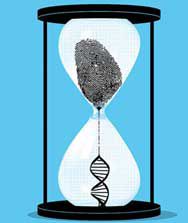Case Analysis: KM Nanavati v/s State Of Maharashtra
This case of KM Nanavati v/s State Of Maharashtra AIR 605 , 1962 is a
landmark case which is due to the jury trials [this case was one of the last
case to be heard as a jury trial in India , jury trial means the case in which
group of people takes decision .the code of criminal procedure in 1974 the
chapter of jury trial was closed]
Background/Facts Of The Case
Kawas Manekshaw Nanavati a.k.a KM Nanavati was a naval officer in Indian navy who murdered a man named Prem Ahuja with whom the wife of KM Nanavati [Sylvia] was having extra marital affair.
Nanavati went to Ahuja's home armed with his revolver , three gunshots were heard when Nanavati came out, Ahuja was found dead after this Then the accused KM Nanavati surrendered himself to the police.
KM Nanavati was on trial under section 302 and section 304 of Indian penal code for the murder of Prem Ahuja
Issues Raised
The first issue raised was whether this act of murder comes under grave and sudden provocation and the culpable homicide not amounting to murder or not ?
Whether the pardoning power of the governor and the special leave petition can be moved together?
Culpable Homicide Not Amounting To Murder:
Except in the cases hereinafter excepted, culpable homicide is murder, if the act by which the death is caused is done with the intention of causing death, or
2ndly.If it is done with the intention of causing such bodily injury as the offender knows to be likely to cause the death of the person to whom the harm is caused, or—
3rdly. If it is done with the intention of causing bodily injury to any person and the bodily injury intended to be inflicted is sufficient in the ordinary course of nature to cause death, or
4th. If the person committing the act knows that it is so imminently dangerous that it must, in all probability, cause death, or such bodily injury as is likely to cause death, and commits such act without any excuse for incurring the risk of causing death or such injury as aforesaid.
Exception 1: When culpable homicide is not murder.—Culpable homicide is not murder if the offender, whilst deprived of the power of self-control by grave and sudden provocation, causes the death of the person who gave the provocation or causes the death of any other person by mistake or accident.
Argument Of The Petitioners [K.M Nanavati]
KM Nanavati contended that the Bombay high court was not empowered by section 307 (3) of IPC to set the verdict aside of the jury on the grounds that there were misdirections in the charge.
Since there was grave and sudden provocation , the offence committed , if any was not murder, but culpable homicide not amounting to murder
Petitioners also stated that he killed Mr. Ahuja for protecting himself under self defence.
Argument Respondents
Mr. Ahuja had just tooked shower , he came out of his bathroom in towel . his towel was still on his body when he discovered dead which was unlikely for a period of sudden fight
the confession of Sylvia and the time of murder of Prem Ahuja time lapse, that was sufficient enough to regain self control he was having sufficient cooling time.
Which demonstrates that it was nor sudden and was pre-mediated murder Mr. Ahuja's servant whose name was anjani was the witness who testified shots that were fired in rapid succession
Judgement
The suPreme court upheld the judgement of Bombay high court and held that KM Nanavati is guilty under section 302 of IPC and sentenced him to undergo life imprisonment
Section 302 of IPC states that:
The suPreme court held that power of the governor will exist as per statutory coexistence rule according to which the pardoning power of the governor is superior so the SLP and the pardoning power of governor can't exist together.
The basis of the decision of of supreme court:
On April 27 1959 , Sylvia confessed to Nanavati of her illicit intimacy with Mr. Ahuja The first basis was the confession of Sylvia and the time of murder of Prem Ahuja time lapse, that was sufficient enough to regain self control .
Since Nanavati Ahuja had asked Mr.Ahuja some questions regarding future of his wife and children indicates his conscious state of mind.
Before shooting Mr. Ahuja, Nanavati had also abused him so it can't be the basis for grave and sudden provocation
KM Nanavati was declared as not guilty initially be a majority ratio of 8:1 . but the sessions judge disagreed with the decision and transferred the case to Bombay high court
Then the divisional bench of Bombay high court on march 11,1960 held that the appellant KM Nanavati was guilty of section 302 of IPC and sentenced him undergo rigorous imprisonment of life.
The appellant appealed in suPreme court by special leave petition and made an application to the governor under article 161 which gives pardoning power to the governor .
Conclusion:
Hence it can be concluded from the above discussions that this case has received a lots of media coverage and inspired several books and movies. Nanavati was pardoned by governor vijay lakshmi pandit after 3 years after which Nanavati and his family emigrated to Canada .
Written By: Kumari Sheetal, student of 4th year at SRMS College Of Law Bareilly Affiliated With MJP Rohelkhand University.
Background/Facts Of The Case
Kawas Manekshaw Nanavati a.k.a KM Nanavati was a naval officer in Indian navy who murdered a man named Prem Ahuja with whom the wife of KM Nanavati [Sylvia] was having extra marital affair.
Nanavati went to Ahuja's home armed with his revolver , three gunshots were heard when Nanavati came out, Ahuja was found dead after this Then the accused KM Nanavati surrendered himself to the police.
KM Nanavati was on trial under section 302 and section 304 of Indian penal code for the murder of Prem Ahuja
Issues Raised
The first issue raised was whether this act of murder comes under grave and sudden provocation and the culpable homicide not amounting to murder or not ?
Whether the pardoning power of the governor and the special leave petition can be moved together?
Culpable Homicide Not Amounting To Murder:
Except in the cases hereinafter excepted, culpable homicide is murder, if the act by which the death is caused is done with the intention of causing death, or
2ndly.If it is done with the intention of causing such bodily injury as the offender knows to be likely to cause the death of the person to whom the harm is caused, or—
3rdly. If it is done with the intention of causing bodily injury to any person and the bodily injury intended to be inflicted is sufficient in the ordinary course of nature to cause death, or
4th. If the person committing the act knows that it is so imminently dangerous that it must, in all probability, cause death, or such bodily injury as is likely to cause death, and commits such act without any excuse for incurring the risk of causing death or such injury as aforesaid.
Exception 1: When culpable homicide is not murder.—Culpable homicide is not murder if the offender, whilst deprived of the power of self-control by grave and sudden provocation, causes the death of the person who gave the provocation or causes the death of any other person by mistake or accident.
Argument Of The Petitioners [K.M Nanavati]
KM Nanavati contended that the Bombay high court was not empowered by section 307 (3) of IPC to set the verdict aside of the jury on the grounds that there were misdirections in the charge.
Since there was grave and sudden provocation , the offence committed , if any was not murder, but culpable homicide not amounting to murder
Petitioners also stated that he killed Mr. Ahuja for protecting himself under self defence.
Argument Respondents
Mr. Ahuja had just tooked shower , he came out of his bathroom in towel . his towel was still on his body when he discovered dead which was unlikely for a period of sudden fight
the confession of Sylvia and the time of murder of Prem Ahuja time lapse, that was sufficient enough to regain self control he was having sufficient cooling time.
Which demonstrates that it was nor sudden and was pre-mediated murder Mr. Ahuja's servant whose name was anjani was the witness who testified shots that were fired in rapid succession
Judgement
The suPreme court upheld the judgement of Bombay high court and held that KM Nanavati is guilty under section 302 of IPC and sentenced him to undergo life imprisonment
Section 302 of IPC states that:
Punishment for Murder:
Whoever commits murder shall be punished with death, or 1[imprisonment for life], and shall also be liable to fine.The suPreme court held that power of the governor will exist as per statutory coexistence rule according to which the pardoning power of the governor is superior so the SLP and the pardoning power of governor can't exist together.
The basis of the decision of of supreme court:
On April 27 1959 , Sylvia confessed to Nanavati of her illicit intimacy with Mr. Ahuja The first basis was the confession of Sylvia and the time of murder of Prem Ahuja time lapse, that was sufficient enough to regain self control .
Since Nanavati Ahuja had asked Mr.Ahuja some questions regarding future of his wife and children indicates his conscious state of mind.
Before shooting Mr. Ahuja, Nanavati had also abused him so it can't be the basis for grave and sudden provocation
KM Nanavati was declared as not guilty initially be a majority ratio of 8:1 . but the sessions judge disagreed with the decision and transferred the case to Bombay high court
Then the divisional bench of Bombay high court on march 11,1960 held that the appellant KM Nanavati was guilty of section 302 of IPC and sentenced him undergo rigorous imprisonment of life.
Article 161 of the Indian constitution states that:
Power of Governor to grant pardons, etc, and to suspend, remit or commute sentences in certain cases The Governor of a State shall have the power to grant pardons, reprieves, respites or remissions of punishment or to suspend, remit or commute the sentence of any person convicted of any offence against any law relating to a matter to which the executive power of the State extendsThe appellant appealed in suPreme court by special leave petition and made an application to the governor under article 161 which gives pardoning power to the governor .
Conclusion:
Hence it can be concluded from the above discussions that this case has received a lots of media coverage and inspired several books and movies. Nanavati was pardoned by governor vijay lakshmi pandit after 3 years after which Nanavati and his family emigrated to Canada .
Written By: Kumari Sheetal, student of 4th year at SRMS College Of Law Bareilly Affiliated With MJP Rohelkhand University.
Law Article in India
Legal Question & Answers
Lawyers in India - Search By City
LawArticles
How To File For Mutual Divorce In Delhi

How To File For Mutual Divorce In Delhi Mutual Consent Divorce is the Simplest Way to Obtain a D...
Increased Age For Girls Marriage

It is hoped that the Prohibition of Child Marriage (Amendment) Bill, 2021, which intends to inc...
Facade of Social Media

One may very easily get absorbed in the lives of others as one scrolls through a Facebook news ...
Section 482 CrPc - Quashing Of FIR: Guid...

The Inherent power under Section 482 in The Code Of Criminal Procedure, 1973 (37th Chapter of t...
The Uniform Civil Code (UCC) in India: A...

The Uniform Civil Code (UCC) is a concept that proposes the unification of personal laws across...
Role Of Artificial Intelligence In Legal...

Artificial intelligence (AI) is revolutionizing various sectors of the economy, and the legal i...








Please Drop Your Comments